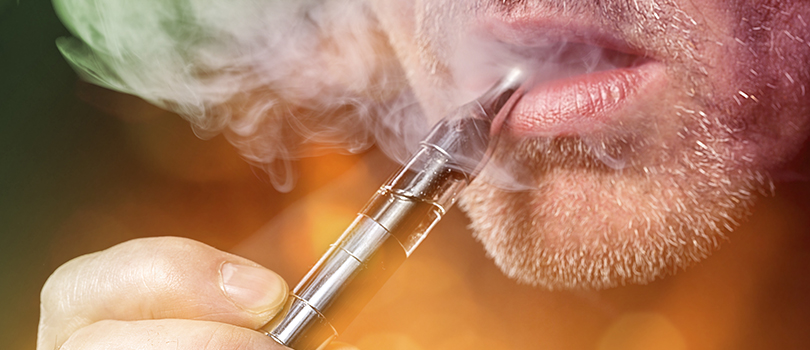
With the industry’s latest science, Dr. Konstantinos Farsalinos led a study comparing nicotine absorption between first (stick ecig) and new-gen devices (advanced personal vaporizer).
In the past, vaping was found to deliver minimal amounts of nicotine to the user as measured by plasma nicotine levels. However, since this industry continues to progress so quickly, there has been an evolution of new, more efficient devices to enter the public e-cigarette market. To get a bit more realistic, advanced devices have been around for quite a while, but these larger devices are just now becoming commonly acceptable in the public eye. – Dr. Faralinos believes the devices used in past experiments are outdated, and I would have to agree. In addition, surveys have shown that new-gen devices or better known as advanced personal vaporizers, are more popular with dedicated vapers and many of them have reported complete smoking cessation.
Unfortunately, there hasn’t been a study to evaluate nicotine absorption from the new-gen devices. That said, this study was conducted to compare the nicotine absorption from a stick ecig versus an advanced personal vaporizer in experienced vapers.
There were 23 healthy and experienced vapers recruited for the study. The recruits used a V2 standard E-Cig as a first generation device and used an eVic set at 9watts with an EVOD Clearomizer as the new-gen device. They used the devices on two separate days in a randomized cross-over design and were requested to abstain from vaping, caffeine and alcohol intake for at least 8 hours before each experimental setting. For both settings, the same 18mg FlavourArt MaxBlend e-liquid was used.
[blockquote cite=”Nicotine absorption from electronic cigarette use: comparison between first and new-generation devices” float=”left” align=”left”]A wide range of electronic cigarette (EC) devices, from small cigarette-like (first-generation) to new-generation high-capacity batteries with electronic circuits that provide high energy to a refillable atomizer, are available for smokers to substitute smoking. Nicotine delivery to the bloodstream is important in determining the addictiveness of ECs, but also their efficacy as smoking substitutes. In this study, plasma nicotine levels were measured in experienced users using a first- vs. new-generation EC device for 1 hour with an 18 mg/ml nicotine-containing liquid. Plasma nicotine levels were higher by 35–72% when using the new- compared to the first-generation device. Compared to smoking one tobacco cigarette, the EC devices and liquid used in this study delivered one-third to one-fourth the amount of nicotine after 5 minutes of use. New-generation EC devices were more efficient in nicotine delivery, but still delivered nicotine much slower compared to tobacco cigarettes. The use of 18 mg/ml nicotine-concentration liquid probably compromises ECs’ effectiveness as smoking substitutes; this study supports the need for higher levels of nicotine-containing liquids (approximately 50 mg/ml) in order to deliver nicotine more effectively and approach the nicotine-delivery profile of tobacco cigarettes.[/blockquote]
Note: The study was funded by American E-Liquid Manufacturing Standards Association (AEMSA).








